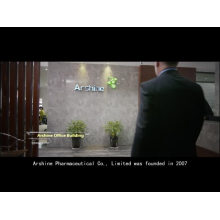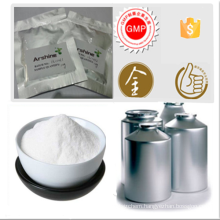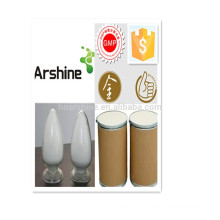Determination of feed neutral detergent fibers and acidic detergent fibers
2021-06-06
Determination of feed neutral detergent fibers and acidic detergent fibers
Determination of neutral detergent fibers and acidic detergent fibers using Van Soest's defibration analysis: Botanical feeds are boiled with a neutral detergent and the insoluble residues are neutral detergent fibers, which are mainly cell wall constituents. Includes hemicellulose, cellulose, lignin, and silicates. Neutral detergent fibers are treated with acidic detergents, and the remaining residues are acidic detergent fibers, including cellulose, lignin, and silicates. The residue of the acidic detergent fiber treated with 72% sulfuric acid was lignin and silicate, and the residue after 72% sulfuric acid treatment was subtracted from the value of the acid detergent fiber as the cellulose content of the feed. The residue after 72% sulfuric acid treatment was ashed, and the part that escaped during the ashing process was the content of acidic washed lignin (ADL). In the agricultural field, or in the food industry, especially in the fast determination, we usually do not choose a laboratory method for the measurement. Instead, we choose the fast method, ie, directly using an instrument such as a fiber tester. The fiber tester uses an acid-alkali digestion method and is sometimes called a coarse fiber tester because the measured material contains not only fibers but also other substances such as lignin, and is therefore referred to as crude fiber.
Preparation of Reagents: Neutral detergent (3% Sodium Lauryl Sulfate): Accurately weigh 18.8 g disodium edetate (EDTA, C10H14O8Na22H2O, analytical grade) and 6.8 g sodium borate (Na2B4O7?10H2O, analysis Pure) into a beaker, add a small amount of distilled water, heated to dissolve, then add 30g sodium lauryl sulfate (C12H25NaO4S, analytically pure) and 10ml of ethylene glycol ether (C4H10O2, analytically pure); Weigh 4.56g anhydrous Disodium hydrogen phosphate (Na2HPO4, analytically pure) was placed in another beaker, slightly heated with distilled water, dissolved, poured into the previous beaker, diluted to 1000 ml in a volumetric flask, pH value of about 6.9 to 7.1 (pH Generally do not need to adjust the value); 1N sulfuric acid: Measure about 27.87ml concentrated sulfuric acid (analytical purity, specific gravity 1.84,98%), slowly added to a beaker that has been filled with 500ml distilled water, cooled and then poured into a 1000ml volumetric flask to determine the volume; Acid detergent (2% cetyltrimethylammonium bromide): Weigh 20 g of hexadecane trimethylammonium bromide (CTAB, analytical grade) in 1000 ml of 1N sulfuric acid and filter if necessary.
Procedure: Determination of Neutral Detergent Fibers. Accurately weigh 1.0000g samples (passed through a 40-mesh sieve) in a beaker and add 100ml of neutral detergent and a few drops of decalin and 0.5g of anhydrous sodium sulfite. Place the beaker with the condensing device on the electric stove and boil it in 5~10min, and keep it for 60min. After boiling, remove the straight beaker, pour the beaker solution into a glass crucible of known weight installed on the filter flask, filter, remove all the residue from the beaker, and rinse the glass crucible and residue with boiling water. Until the filtrate is neutral. Rinse twice with 20 ml acetone and suction filter. The glass crucible was placed in an oven at 105°C for 2 hours, cooled in a desiccator for 30 minutes, weighed and weighed until constant weight. Acid wash fiber assay. Accurately weigh 1g sample (through a 40 mesh sieve) in a beaker and add 100ml of acidic detergent and a few drops of decalin. Place the beaker with the condensing device on the electric stove and boil it in 5~10min, and keep it for 60min. While hot, the glass crucible with a known weight is suction filtered, and the glass crucible and the residue are repeatedly washed with boiling water until the filtrate is neutral. Rinse the residue with a small amount of acetone until the extracted acetone is colorless and remove acetone. The glass crucibles were placed in an oven at 105°C for 2 hours, cooled in a desiccator for 30 minutes, weighed and weighed until constant weight. Acid Washing Lignin and Acid Insoluble Ash (AIA) Determination: The acidic wash fiber was added to 72% sulfuric acid, digested at 20°C for 3 h, filtered, and rinsed to neutrality. During the digestion process, the dissolved part is cellulose, and the insoluble residues are acid-washed lignin and acid-insoluble ash. After drying and calcining the residue, the acid-washed lignin and acid-insoluble ash content can be obtained.
Calculation of results: Calculation of neutral detergent fiber content: NDF(%)=(W1-W2)/W×100; where: W1—glass enamel and NDF weight (g); W2—glass enamel weight (g); W ―Sample weight (g); calculation of acid washing fiber content: ADF(%)=(G1-G2)/G×100; where: G1―glass enamel and ADF weight (g); G2 glass weight ( g); W - sample weight (g). Calculation of hemicellulose content: hemicellulose (%) = NDF (%) - ADF (%); Calculation of cellulose content: cellulose = ADF (%) - Residue (%) after treatment with 72% sulfuric acid; Calculation of acid washing lignin (ADL) content: ADL (%) = residue (%) - ash (silicate, %).
Sodium Lauryl Ether Sulfate (SLES),white or yellowish paste, an anionic detergent and surfactant found in many personal care products (soaps, shampoos, toothpaste, etc.). SLES is an inexpensive and very effective foaming agent.SLES, sodium lauryl sulfate (SLS), ammonium lauryl sulfate (ALS), and sodium pareth sulfate are surfactants that are used in many cosmetic products for their cleaning and emulsifying properties. They behave similarly to soap. It is derived from palm kernel oil or coconut oil.
Its chemical formula is CH3(CH2)11(OCH2CH2)nOSO3Na. Sometimes the number represented by n is specified in the name, for example laureth-2 sulfate. The product is heterogeneous in the number of ethoxyl groups, where n is the mean. Laureth-3 sulfate is common in commercial products.
SLES is prepared by ethoxylation of dodecyl alcohol, which is produced industrially from palm kernel oil or coconut oil. The resulting ethoxylate is converted to a half ester of sulfuric acid, which is neutralized by conversion to the sodium salt.[1] The related surfactant sodium lauryl sulfate (also known as sodium dodecyl sulfate or SDS) is produced similarly, but without the ethoxylation step. SLS and ammonium lauryl sulfate (ALS) are commonly used alternatives to SLES in consumer products.
SLES is a kind of anionic surfactant with excellent performance.
It has good cleaning, emulsifying, wetting, densifying and foaming performance,with good solvency, wide compatibility, strong resistance to hard water, high biodegradation, and low irritation to skin and eye.
1.SLES(Sodium Laureth Sulphate) widely used in liquid detergent.; e.g. Shampoo, dishwashing detergent, bubble bath liquid, hand washing etc.
2.If using SLES(Sodium Lauryl Ether Sulfate) to replace LABSA partially, phosphate can be saved or reduced, and general dosage of active matter may be reduced, in washing powder and detergent for heavy dirty.
3.SLES(Sodium Lauryl Ether Sulphate) can be used as lubricant, dyeing agent, cleanser, foaming agent and degreasing agent.; e.g. printing and dyeing industry, petroleum and leather industry.
Lauryl Ether Sulfate,
Sodium Lauryl Ether Sulfate,
Sodium Laureth Ether Sulfate,
Sodium Lauryl Ether Sulfate DetergentSteel Sheet & Plate Co., Ltd. http://www.hnchromiumoxidegreen.com




